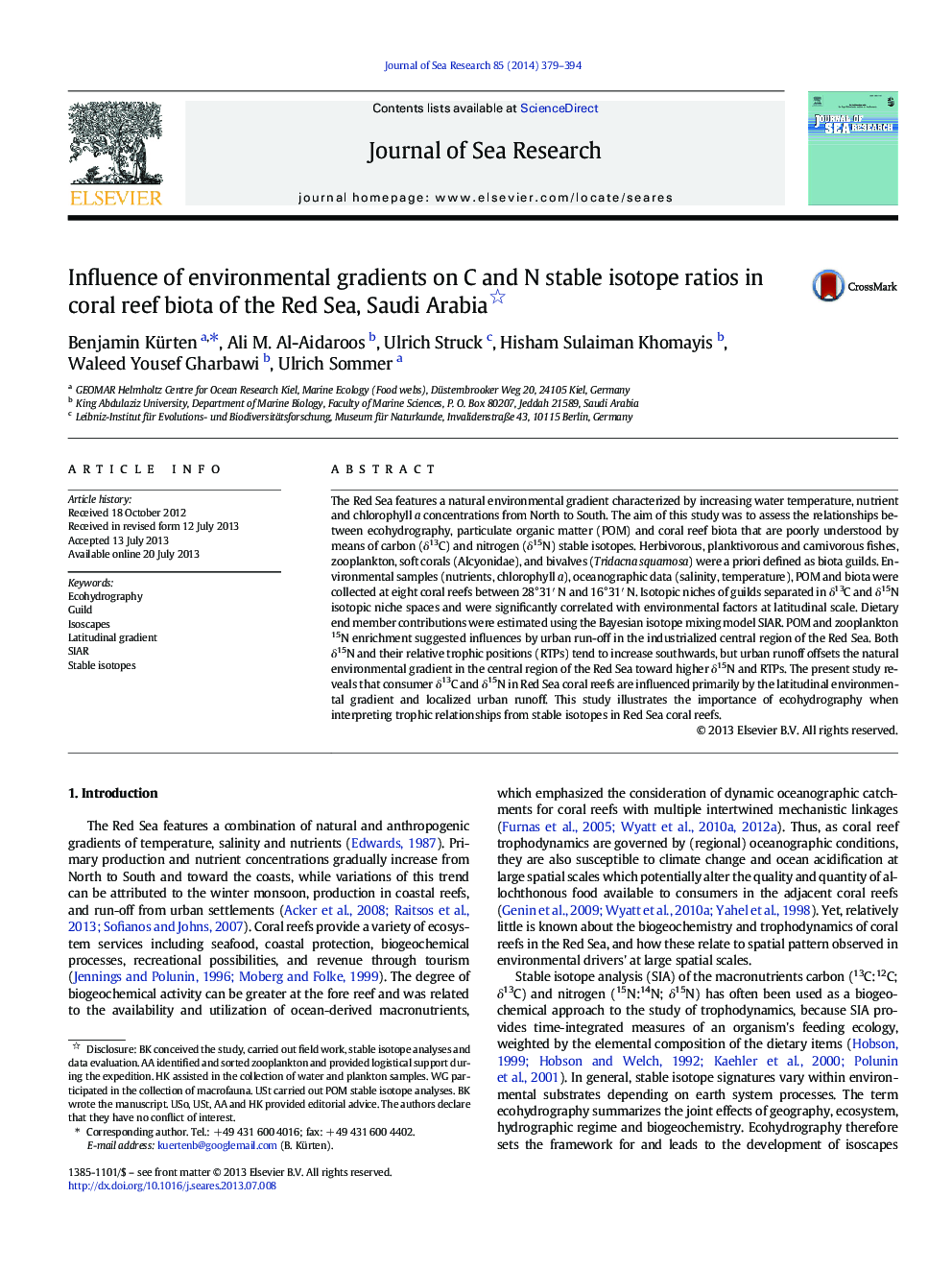| Article ID | Journal | Published Year | Pages | File Type |
|---|---|---|---|---|
| 6387425 | Journal of Sea Research | 2014 | 16 Pages |
Abstract
The Red Sea features a natural environmental gradient characterized by increasing water temperature, nutrient and chlorophyll a concentrations from North to South. The aim of this study was to assess the relationships between ecohydrography, particulate organic matter (POM) and coral reef biota that are poorly understood by means of carbon (δ13C) and nitrogen (δ15N) stable isotopes. Herbivorous, planktivorous and carnivorous fishes, zooplankton, soft corals (Alcyonidae), and bivalves (Tridacna squamosa) were a priori defined as biota guilds. Environmental samples (nutrients, chlorophyll a), oceanographic data (salinity, temperature), POM and biota were collected at eight coral reefs between 28°31ⲠN and 16°31ⲠN. Isotopic niches of guilds separated in δ13C and δ15N isotopic niche spaces and were significantly correlated with environmental factors at latitudinal scale. Dietary end member contributions were estimated using the Bayesian isotope mixing model SIAR. POM and zooplankton 15N enrichment suggested influences by urban run-off in the industrialized central region of the Red Sea. Both δ15N and their relative trophic positions (RTPs) tend to increase southwards, but urban runoff offsets the natural environmental gradient in the central region of the Red Sea toward higher δ15N and RTPs. The present study reveals that consumer δ13C and δ15N in Red Sea coral reefs are influenced primarily by the latitudinal environmental gradient and localized urban runoff. This study illustrates the importance of ecohydrography when interpreting trophic relationships from stable isotopes in Red Sea coral reefs.
Related Topics
Physical Sciences and Engineering
Earth and Planetary Sciences
Oceanography
Authors
Benjamin Kürten, Ali M. Al-Aidaroos, Ulrich Struck, Hisham Sulaiman Khomayis, Waleed Yousef Gharbawi, Ulrich Sommer,
